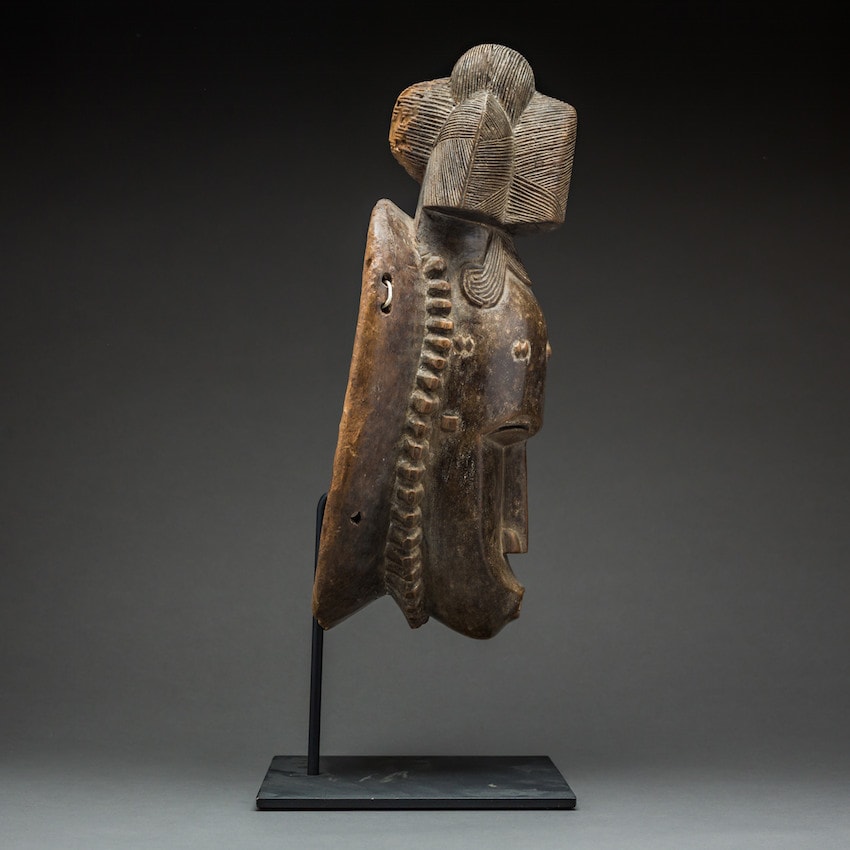Yaure wooden ceremonial dance mask, 1870 CE - 1920 CE
Wood
42.4 x 18.4 cm
16 3/4 x 7 1/4 in
16 3/4 x 7 1/4 in
PF.5569
Further images
The more or less 20,000 Yaure inhabit the central region of the Côte d’Ivoire, the territory between the White and Red Bandama Rivers, to the east of the city of...
The more or less 20,000 Yaure inhabit the central region of the Côte d’Ivoire, the territory between the White and Red Bandama Rivers, to the east of the city of Bouafle. The Yohure are geographically and linguistically situated between the Baule tribe, an Akan language group to the east, and the Guro and Gagu tribes, Mande-speaking populations to the west. Depending upon their proximity to their neighbors, the inhabitants of Yaure villages are either entirely Baule or Mande speaking. Villages are generally associated with one clan, always governed by a leader assisted by a council of elders who represent each family holding. Each family lineage traces his roots to a particular ancestor.
Not only the Yaure language, but also the culture, religion and art are influenced by their powerful neighbors, the Baule and Guro. With years of influence from their neighbors, the Yaure though forged a more refined art by incorporating the most appealing aspects of the Baule and the Guro arts.
Yaure masks are the prime examples of amalgams of these two worlds. Such masks have elongated faces with protruding lips. The coiffure is usually simple and done in three parts, parted on each side. Yaure masks are also decorated by scarification marks, usually a few short repetitive marks placed on the forehead.
The Yaure believe their masks are embodiments of the Yu spirit, an extremely dangerous spirit that can harm humans; but can also ensure their survival. With the aid of such a mask, the people hoped to influence supernatural powers of the Yu and such masks were handled with extreme caution and only during the ceremonial festivities, and were absolutely kept out of sight of all women.
Not only the Yaure language, but also the culture, religion and art are influenced by their powerful neighbors, the Baule and Guro. With years of influence from their neighbors, the Yaure though forged a more refined art by incorporating the most appealing aspects of the Baule and the Guro arts.
Yaure masks are the prime examples of amalgams of these two worlds. Such masks have elongated faces with protruding lips. The coiffure is usually simple and done in three parts, parted on each side. Yaure masks are also decorated by scarification marks, usually a few short repetitive marks placed on the forehead.
The Yaure believe their masks are embodiments of the Yu spirit, an extremely dangerous spirit that can harm humans; but can also ensure their survival. With the aid of such a mask, the people hoped to influence supernatural powers of the Yu and such masks were handled with extreme caution and only during the ceremonial festivities, and were absolutely kept out of sight of all women.







